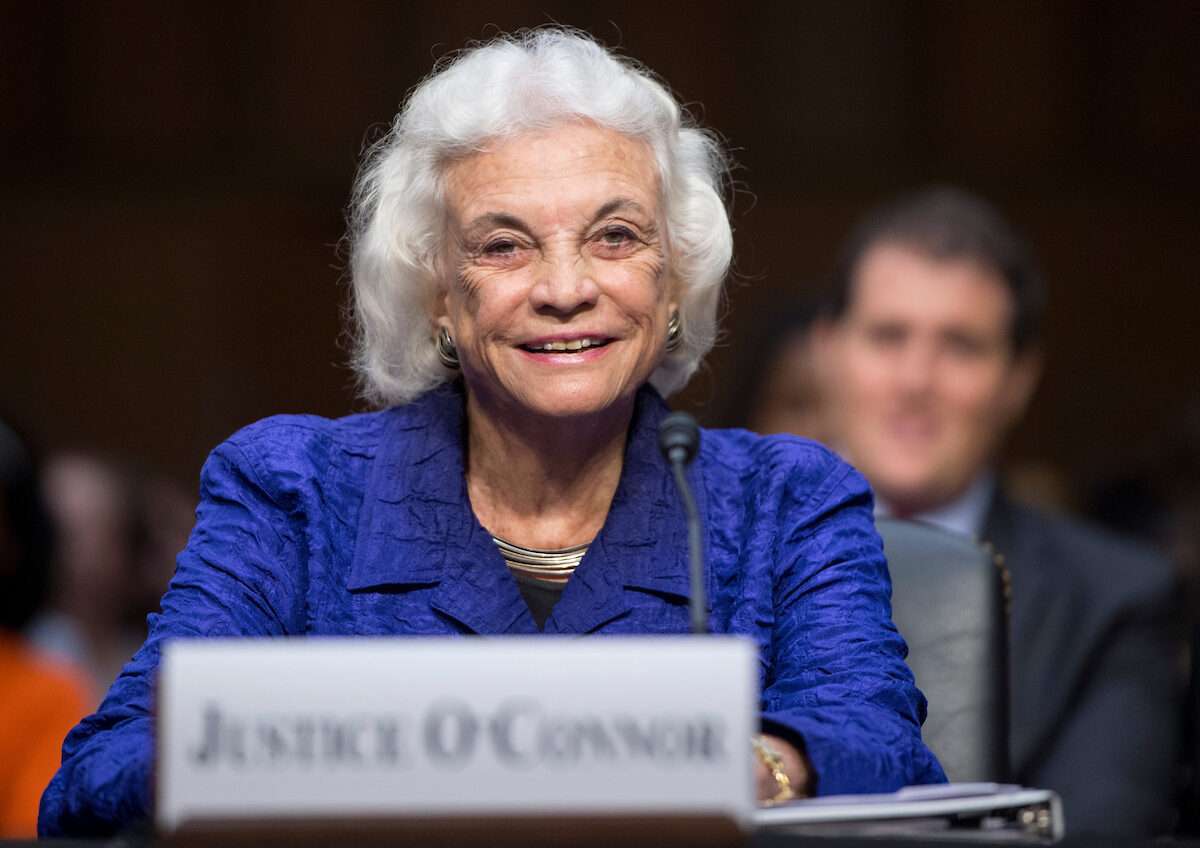Sandra Day O’Connor, the first woman to serve on the Supreme Court, has died at the age of 93 due to complications from dementia. Appointed by President Ronald Reagan in 1981, O’Connor was a trailblazer for women in the legal profession and served as a pivotal swing vote on the nation’s highest court for over two decades.
O’Connor grew up on a cattle ranch in Arizona, developing a rugged self-reliance that served her well throughout her barrier-breaking legal career. After being turned down by law firms because of her gender, she started her own firm before embarking on a political career as a state senator and judge. Her lifetime of achievements and reputation for fairness led President Reagan to nominate her to the Supreme Court in 1981.
On the Supreme Court, O’Connor often served as the swing vote in close decisions, including the landmark 1992 Planned Parenthood v. Casey decision upholding Roe v. Wade. She wrote the 2003 opinion upholding affirmative action in college admissions. O’Connor retired in 2006 to care for her husband, who suffered from Alzheimer’s disease, the same illness that would later claim her life. In retirement, she advocated for civics education to uphold American democracy.
Early Life Growing Up on a Cattle Ranch
Sandra Day was born on March 26, 1930 in El Paso, Texas. Her family owned the Lazy B cattle ranch in Arizona, where she spent much of her childhood learning to brand cattle, drive tractors, and shoot rifles.
“Growing up on the Lazy B Ranch in Arizona, O’Connor was known for her self-reliance and independence, traits she acquired as a young woman branding cattle, driving tractors, and firing rifles,” Chief Justice John Roberts later said in a tribute.
This rugged upbringing instilled in O’Connor a fierce self-determination that drove her groundbreaking career. The remote ranch, 40 miles from the nearest town, was initially without electricity or running water. From a young age, O’Connor performed chores like feeding chickens, gathering eggs, sewing, washing clothes by hand, and reading by kerosene lamp.
Attending school meant a two-hour drive each way in the family car. When she wasn’t able to attend school, she would receive lessons from her father. Her isolation from other children and intense connection with the land shaped her independent spirit.
Overcoming Barriers to Attend Stanford Law
O’Connor graduated from Stanford University in 1950 with a bachelor’s degree in economics. She continued on to Stanford Law School, where she met William Rehnquist, the future Chief Justice who would become her colleague on the Supreme Court.
After graduating near the top of her Stanford Law class in 1952, O’Connor faced discrimination because she was a woman. Law firms refused to hire her, even though she was clearly qualified. Undeterred, she eventually started her own firm in Maryvale, Arizona alongside her husband John O’Connor, whom she met at Stanford Law. Her early struggles highlighted the barriers that women faced in entering the legal profession.
Launching a Political Career in Arizona
Prior to joining the bench, O’Connor launched an unlikely political career, winning election to the Arizona State Senate in 1969. She took on controversial fights to reform the state’s community property laws. After five years as a state senator, she served as a local judge before being appointed to the Arizona Court of Appeals in 1979.
Her time in elected office and dedication to public service in Arizona provided valuable experience that she would later draw upon as a pragmatic, cooperative Supreme Court justice.
Becoming the First Woman Nominated to the Supreme Court
On July 7, 1981, President Ronald Reagan made history by nominating O’Connor as the first woman to serve on the Supreme Court. “I made a commitment that one of my first Supreme Court appointments would be the most qualified woman that I could possibly find,” Reagan said.
O’Connor’s nomination faced little opposition, although some conservative groups expressed skepticism that she would remain true to Republican principles. In September 1981, the Senate confirmed her 99-0, with Senator Max Baucus absent from the vote. O’Connor received her commission on September 25, 1981.
On the bench, O’Connor carefully guarded her independence. “My perceptions might be different than some of my colleagues’ but at the end of the day we all ought to be able to agree on some sensible solution to the problem,” she said in a 2003 CNN interview. Her pragmatic approach often made her the Court’s swing vote on controversial social issues.
Key Supreme Court Rulings
In her quarter century on the Court, O’Connor played pivotal roles in rulings related to abortion, affirmative action and the 2000 presidential election.
In 1989, she voted to uphold restrictions on abortion but declined to fully overturn Roe v. Wade. Her crucial vote and compromise opinion in 1992’s Planned Parenthood v. Casey reaffirmed constitutional protections for abortion rights by establishing an “undue burden” test. In 2022, the Court’s new conservative majority overturned Roe by striking down the standards outlined in Casey.
O’Connor authored the 2003 opinion in Grutter v. Bollinger upholding affirmative action in university admissions, writing that colleges have an interest in a diverse student body. The current Supreme Court appears poised to prohibit race-based affirmative action in upcoming rulings.
O’Connor sided with the 5-4 majority in Bush v. Gore, the infamous case halting Florida’s recount that ensured victory for George W. Bush in the deadlocked 2000 election.
Legacy as First Woman on the Supreme Court
As the first female Supreme Court justice, O’Connor served as an inspiration for generations of women lawyers. She helped open the door to more gender diversity in the law; currently, women comprise 36 percent of U.S. lawyers. Three women sit on the Supreme Court today.
“She has shown time and time again that she is a true cowgirl,” Justice Ruth Bader Ginsburg once said, praising the toughness O’Connor gained growing up on that Arizona ranch.
O’Connor used her status as a role model to advocate for civics education among youth. “For the public generally to see and respect the fact that in positions of power and authority, that women are well-represented,” she told CNN. “That it is not an all-male governance, as it once was.”
Though she left the Court in 2006, O’Connor’s pragmatic voice continued to resonate. After her diagnosis with dementia, she wrote a 2018 letter urging increased civics awareness to defend American democracy, a cause that defined her public life.
“While the final chapter of my life with dementia may be trying, nothing has diminished my gratitude and deep appreciation for the countless blessings of my life,” O’Connor wrote. Her barrier-breaking service leaves an incredible legacy for women that will endure for generations.





















